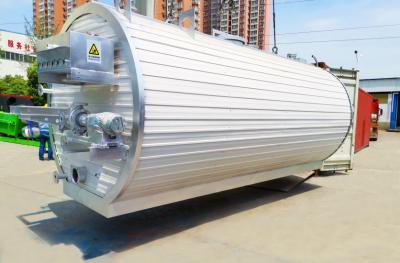Does infection with the new coronavirus actually have sequelae?
CCTV: You may have noticed the shift in expression around the sequelae of the new crown. From reports of sequelae in foreign cases to today's experts denying that infection causes sequelae, what theories have been explored in between? CCTV interviewed Zhu Hua Chen, Associate Professor at the School of Public Health, University of Hong Kong.
Does infection with the new coronavirus actually have sequelae?
Zhu Hua Chen: Personally, I would prefer to use the expression "long new crown" rather than "sequelae", because sequelae sounds like something serious, something that will last for a long time, something that is difficult to reverse.
In fact, there are quite a lot of reports from abroad about long new crowns, but the situation abroad is different from ours, as they have experienced many waves of epidemics, and strains such as the very virulent Delta have some symptoms of long new crowns, but there are basically no reports of sequelae of Omicron.
But the term long neocon is a little bit subtle, it is defined differently in different places, some people might call symptoms lasting more than 1 month long neocon, others will extend it to 3 months, taking a different standard of conversation, that's the opposite.
Will the increase in the number of infections lead to new viral variants? Will the direction of viral mutation be a decrease in pathogenicity?
Zhu Huachen: With such a large population base in China, it is certain that the virus will accumulate many changes as it keeps spreading, but no one can be sure which direction it will go.
The most important thing is that those who are engaged in disease prevention and control, public health, and virology research must do a good job of monitoring pathogens, tracking changes in the virus, and doing a good job of risk assessment to know clearly whether it is becoming more virulent, more infectious, or weaker.
If a disease is not very costly to prevent and control, of course we want to put it out, but as it becomes more costly to control and the virus becomes less virulent, then the cost and benefit we pay will be disproportionate, and this is the time to adjust our strategy; of course it does not mean sitting back and waiting for the virus, we can take advantage of human initiative to reduce the impact through better prevention and control, medical treatment and rescue. We can make timely adjustments as the virus changes, so that when the virus is strong, prevention and control is tight, and when it is weak, prevention and control is loose.
In fact, there are still many preventive and control measures in place in Hong Kong. For example, we wear masks everywhere we go from morning to night, even when we go to the gym for a run; there are hand sanitizers everywhere and people will habitually press them when they walk to the entrance of the lift; associations or units with higher risks will require daily antigen testing and only negative results will be allowed to enter. Hospitals will also set critical standards for what to do when medical resources are more stretched, and adjust them whenever they are needed.
In Singapore, too, it will use the number of seriously ill patients or bed occupancy as a barometer, and when it notices a sudden increase in patients, the government will ask people to wear masks and try to stay home or not to gather for meals.
It is like an arms race, the virus is running ahead and we have to keep up. With society and everyone working together in concert, there is actually a lot we can do.



